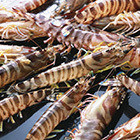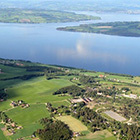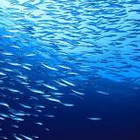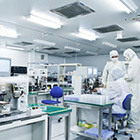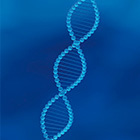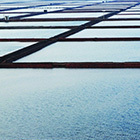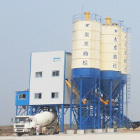Explore the cultivation and breeding technology of Artemia
Release Time:
2022-06-30 15:10
Egg hatching → inoculation → breeding management → Artemia spawning → egg harvesting
Construction of the breeding pond and preparations before seeding: Construction of the breeding pond The depth of the breeding pond is 1m, the size is 50X50m, there are annular grooves on the four sides of the pond, and the water depth is 70-100cm. At the same time, an algae bait culture pond is built, and phytoplankton grows faster in a low salinity environment. Disinfection Before planting Artemia, completely empty the pond, expose it to the sun for 2 weeks, clean the pond bottom mud as needed, and then sprinkle lime all over the bottom of the pond.
Incubation of eggs: the incubator consists of an incubator and a small air pump. The incubator is a round barrel made of plexiglass or plastic with a funnel-shaped bottom. Use a brush and clean water to sterilize the hatching utensils, clean the hatching tank and the inflatable tube, and disinfect the tank wall with a strong hypochlorous acid solution. After 1-2 hours, rinse the disinfectant with clean water until the smell of chlorine can no longer be smelled.
Disinfection of eggs: place the eggs to be hatched in a hypochlorous acid solution containing 200 mg/kg for 20 minutes and continuously inflate; collect the sterilized eggs with a filter, and rinse them thoroughly before placing them in the hatching tank.
Preparation before hatching: Fill the hatching tank with filtered brine; install the aeration system; add 0.5g of available chlorine to each 100L tank water and inflate for about 1 hour; add 0.5g of thiosulfuric acid to the water Sodium to remove residual chlorine.
Incubation conditions: The conditions for the hatching of Artemia eggs are an important factor affecting the hatching rate of the eggs. The main criteria for the control of incubation conditions are as follows. Water: brine of 25‰-35‰; temperature: 25-30℃; aeration: fully stir the water, avoid excessive foam, oxygen is not less than 2mg/L; pH: greater than 8; light: water surface is 2000lx; Density: The density of hatching Artemia eggs is 3g/L. During the hatching process of the eggs, it is necessary to observe whether the hatching rate of the eggs is high, whether the hatching synchronization is good, and whether the larval vitality is strong. The shorter the incubation time, the smaller the size of the newly hatched worms, the better the vigor and the less likely to sink to the bottom, the better the quality of the eggs; if the incubation time exceeds 24 hours, the eggs will be aged the next year. The longer the incubation time, the better the quality of the eggs. the worse. Quality inspection essentials Touch: For wet eggs, it is better to disperse by hand touch, without ice crystals, and the moisture content is about 40%; for dry eggs, it is better to have high dryness and good dispersion. Smell: smell, no odor and good quality.
Visual observation: The particles should be uniform in size, consistent in color, and free of impurities. Microscopic examination: further observe the size, impurities, and the number of empty shells, and at the same time, see whether there are dents (it is good to have dents). Random sampling, take a small amount of Artemia eggs and place them evenly on a glass slide, and observe with an optical microscope. Observe whether there is crystalline material in the attachments outside the eggshell, eggs of good quality, no or very little crystalline material or other impurities outside the eggshell; if there are many crystals and impurities, it means that the eggs have not been cleaned or precipitated after being picked up deal with. Observe the breakage rate of eggs: the breakage rate of eggs is inversely proportional to the egg quality, the higher the breakage rate, the lower the egg quality. The breakage rate of fresh eggs is very low, while the breakage rate of old eggs is higher.
Observe the diameter of the eggs: if the diameter of the eggs is small and the size is the same, the quality of the eggs is good; if the diameters of the eggs are different, they are fresh untreated eggs. Burning determination: Each good Artemia egg will produce small water droplets when it is burned on a fire. Therefore, during identification, you can put some eggs on the glass slide and burn them with fire to see whether the number of small water droplets produced is similar to the number of eggs.
Inoculation: Salinity: 100‰-150‰; Temperature: 15℃; pH: 7.9-8.9; Density: 100 nauplii/L; The transparency of brine in the bait breeding pond is less than 30cm; Water depth: 30-70cm . Precautions for inoculation The inoculation time should be arranged in the evening as much as possible, when the water temperature is the highest, which is conducive to the recovery of nauplii; under strong wind conditions, the nauplii must be siphoned into the pool by the leeward side of the pool to prevent the nauplii from being washed. To the shore; if the hatching site is far from the breeding pond, it needs to be cooled and oxygenated during transportation. The hatching rate of eggs and the survival rate of nauplii should be considered when calculating the inoculation density. Breeding management: Routine testing of environmental conditions Air temperature, temperature of the water table and bottom of the pool, pH, water depth, water transparency, dissolved oxygen. Monitoring of Artemia Growth Sampling of Artemia needs to be done at fixed points in the distribution tank. When sampling, the Artemia at the bottom of the pond should be stirred to ensure the accuracy of sampling. B. Filter, classify and count with filters with 500μm, 375μm and 125μm apertures respectively, analyze the composition and structure of the population, and observe whether there is disease or death. Nutrient monitoring of water bodies Maintaining good phytoplankton populations is critical to the success of Artemia aquaculture. Therefore, routine monitoring of nutrient levels and plankton status in water bodies is very important to provide a basis for daily management. Cultivation and feeding of bait In the early stage of breeding, fertilizer water and brine rich in biological bait are mainly used to keep the transparency at about 30cm. With the growth and development of Artemia, it is necessary to gradually feed organic debris, such as bran and oil cake. Classes, corn, chicken manure, cow and sheep manure, etc. The pellets should be less than 50μ, the feeding amount should be 30-50kg/day·ha, and it should be fed in different times. Inorganic fertilizers can be used if conditions permit, and 20kg of urea and 25kg of diammonium hydrogen phosphate are applied per hectare of water surface every week.
Prevention and control of pests and diseases When breeding, attention should be paid to the prevention of black body disease, and at the same time to prevent water birds from foraging Artemia in shallow water areas. Catch the bristle algae and Enteromorpha in time, and grind them with a colloid mill and feed them to Artemia. Futian sets up a sunscreen net to provide a platform for Artemia to escape the heat. Stimulation of spawning: The factors affecting the spawning of Artemia include the genetic characteristics of Artemia, environmental factors (changes in dissolved oxygen, salinity, temperature, etc., stimulate the synthesis of Artemia hemoglobin, and finally use heme as the final product of metabolism, Secreted by the brown shell gland to form Artemia eggshell). Methods to regulate spawning Change the salinity of the brine in the breeding pond, such as increasing or decreasing salinity; reducing dissolved oxygen; chemical stimulation. Fishing and processing: Fishing of eggs: Artemia eggs are harvested in autumn. It can be scraped directly from the shore, or the eggs floating on the surface or suspended in the water can be picked up from the leeward with a special cheat net. If it is used to collect Artemia eggs blown to the shore by the wind, a square cheat net (40 meshes on the top and 90 meshes below) is often used; if it is used to collect Artemia eggs in the water body, a circular cheat net is often used. In addition, it is also possible to dig pits or build floating grids on the side of the pool, so that the eggs can be concentrated in the local water body for harvesting. Eggs that have just been collected should not be piled up. Simple processing Cleaning: Use a conical bucket, rinse with fresh water first, and then rinse with brine. The main purpose of rinsing is to remove debris, egg shells and dirt on the surface. Dehydration: The method of dehydration of wet eggs is to centrifuge first and then dry in the shade. Drying: During the drying process, it is necessary to prevent the temperature from being too high (not exceeding 40°C) and being exposed to the sun (dry eggs are generally stored at low temperature).
Construction of the breeding pond and preparations before seeding: Construction of the breeding pond The depth of the breeding pond is 1m, the size is 50X50m, there are annular grooves on the four sides of the pond, and the water depth is 70-100cm. At the same time, an algae bait culture pond is built, and phytoplankton grows faster in a low salinity environment. Disinfection Before planting Artemia, completely empty the pond, expose it to the sun for 2 weeks, clean the pond bottom mud as needed, and then sprinkle lime all over the bottom of the pond.
Incubation of eggs: the incubator consists of an incubator and a small air pump. The incubator is a round barrel made of plexiglass or plastic with a funnel-shaped bottom. Use a brush and clean water to sterilize the hatching utensils, clean the hatching tank and the inflatable tube, and disinfect the tank wall with a strong hypochlorous acid solution. After 1-2 hours, rinse the disinfectant with clean water until the smell of chlorine can no longer be smelled.
Disinfection of eggs: place the eggs to be hatched in a hypochlorous acid solution containing 200 mg/kg for 20 minutes and continuously inflate; collect the sterilized eggs with a filter, and rinse them thoroughly before placing them in the hatching tank.
Preparation before hatching: Fill the hatching tank with filtered brine; install the aeration system; add 0.5g of available chlorine to each 100L tank water and inflate for about 1 hour; add 0.5g of thiosulfuric acid to the water Sodium to remove residual chlorine.
Incubation conditions: The conditions for the hatching of Artemia eggs are an important factor affecting the hatching rate of the eggs. The main criteria for the control of incubation conditions are as follows. Water: brine of 25‰-35‰; temperature: 25-30℃; aeration: fully stir the water, avoid excessive foam, oxygen is not less than 2mg/L; pH: greater than 8; light: water surface is 2000lx; Density: The density of hatching Artemia eggs is 3g/L. During the hatching process of the eggs, it is necessary to observe whether the hatching rate of the eggs is high, whether the hatching synchronization is good, and whether the larval vitality is strong. The shorter the incubation time, the smaller the size of the newly hatched worms, the better the vigor and the less likely to sink to the bottom, the better the quality of the eggs; if the incubation time exceeds 24 hours, the eggs will be aged the next year. The longer the incubation time, the better the quality of the eggs. the worse. Quality inspection essentials Touch: For wet eggs, it is better to disperse by hand touch, without ice crystals, and the moisture content is about 40%; for dry eggs, it is better to have high dryness and good dispersion. Smell: smell, no odor and good quality.
Visual observation: The particles should be uniform in size, consistent in color, and free of impurities. Microscopic examination: further observe the size, impurities, and the number of empty shells, and at the same time, see whether there are dents (it is good to have dents). Random sampling, take a small amount of Artemia eggs and place them evenly on a glass slide, and observe with an optical microscope. Observe whether there is crystalline material in the attachments outside the eggshell, eggs of good quality, no or very little crystalline material or other impurities outside the eggshell; if there are many crystals and impurities, it means that the eggs have not been cleaned or precipitated after being picked up deal with. Observe the breakage rate of eggs: the breakage rate of eggs is inversely proportional to the egg quality, the higher the breakage rate, the lower the egg quality. The breakage rate of fresh eggs is very low, while the breakage rate of old eggs is higher.
Observe the diameter of the eggs: if the diameter of the eggs is small and the size is the same, the quality of the eggs is good; if the diameters of the eggs are different, they are fresh untreated eggs. Burning determination: Each good Artemia egg will produce small water droplets when it is burned on a fire. Therefore, during identification, you can put some eggs on the glass slide and burn them with fire to see whether the number of small water droplets produced is similar to the number of eggs.
Inoculation: Salinity: 100‰-150‰; Temperature: 15℃; pH: 7.9-8.9; Density: 100 nauplii/L; The transparency of brine in the bait breeding pond is less than 30cm; Water depth: 30-70cm . Precautions for inoculation The inoculation time should be arranged in the evening as much as possible, when the water temperature is the highest, which is conducive to the recovery of nauplii; under strong wind conditions, the nauplii must be siphoned into the pool by the leeward side of the pool to prevent the nauplii from being washed. To the shore; if the hatching site is far from the breeding pond, it needs to be cooled and oxygenated during transportation. The hatching rate of eggs and the survival rate of nauplii should be considered when calculating the inoculation density. Breeding management: Routine testing of environmental conditions Air temperature, temperature of the water table and bottom of the pool, pH, water depth, water transparency, dissolved oxygen. Monitoring of Artemia Growth Sampling of Artemia needs to be done at fixed points in the distribution tank. When sampling, the Artemia at the bottom of the pond should be stirred to ensure the accuracy of sampling. B. Filter, classify and count with filters with 500μm, 375μm and 125μm apertures respectively, analyze the composition and structure of the population, and observe whether there is disease or death. Nutrient monitoring of water bodies Maintaining good phytoplankton populations is critical to the success of Artemia aquaculture. Therefore, routine monitoring of nutrient levels and plankton status in water bodies is very important to provide a basis for daily management. Cultivation and feeding of bait In the early stage of breeding, fertilizer water and brine rich in biological bait are mainly used to keep the transparency at about 30cm. With the growth and development of Artemia, it is necessary to gradually feed organic debris, such as bran and oil cake. Classes, corn, chicken manure, cow and sheep manure, etc. The pellets should be less than 50μ, the feeding amount should be 30-50kg/day·ha, and it should be fed in different times. Inorganic fertilizers can be used if conditions permit, and 20kg of urea and 25kg of diammonium hydrogen phosphate are applied per hectare of water surface every week.
Prevention and control of pests and diseases When breeding, attention should be paid to the prevention of black body disease, and at the same time to prevent water birds from foraging Artemia in shallow water areas. Catch the bristle algae and Enteromorpha in time, and grind them with a colloid mill and feed them to Artemia. Futian sets up a sunscreen net to provide a platform for Artemia to escape the heat. Stimulation of spawning: The factors affecting the spawning of Artemia include the genetic characteristics of Artemia, environmental factors (changes in dissolved oxygen, salinity, temperature, etc., stimulate the synthesis of Artemia hemoglobin, and finally use heme as the final product of metabolism, Secreted by the brown shell gland to form Artemia eggshell). Methods to regulate spawning Change the salinity of the brine in the breeding pond, such as increasing or decreasing salinity; reducing dissolved oxygen; chemical stimulation. Fishing and processing: Fishing of eggs: Artemia eggs are harvested in autumn. It can be scraped directly from the shore, or the eggs floating on the surface or suspended in the water can be picked up from the leeward with a special cheat net. If it is used to collect Artemia eggs blown to the shore by the wind, a square cheat net (40 meshes on the top and 90 meshes below) is often used; if it is used to collect Artemia eggs in the water body, a circular cheat net is often used. In addition, it is also possible to dig pits or build floating grids on the side of the pool, so that the eggs can be concentrated in the local water body for harvesting. Eggs that have just been collected should not be piled up. Simple processing Cleaning: Use a conical bucket, rinse with fresh water first, and then rinse with brine. The main purpose of rinsing is to remove debris, egg shells and dirt on the surface. Dehydration: The method of dehydration of wet eggs is to centrifuge first and then dry in the shade. Drying: During the drying process, it is necessary to prevent the temperature from being too high (not exceeding 40°C) and being exposed to the sun (dry eggs are generally stored at low temperature).
Latest News
Group Industry


Scan QR code
Visit the website
The latest trends in Singapore


